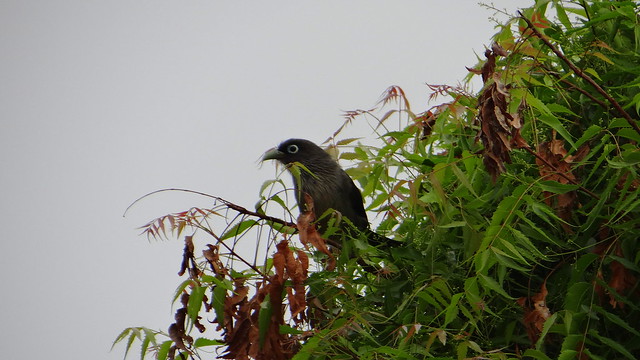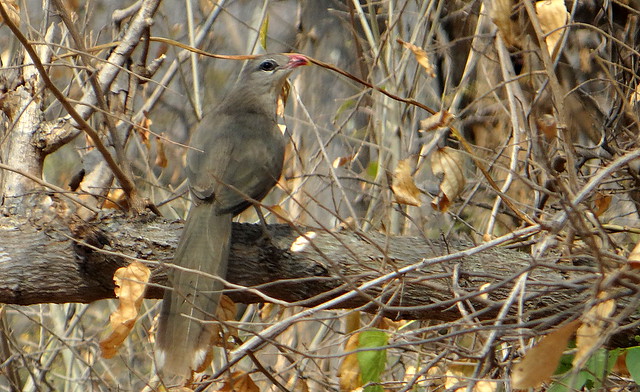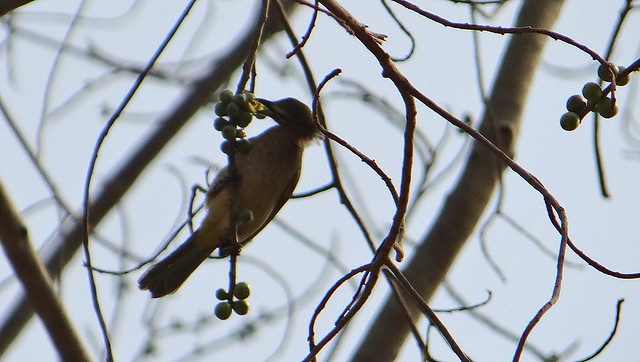The Malkoha, Galibore, 150214
The
has a name derived from the Sinhala word for the Red-faced Malkoha; Mal-Koha meaning flower-cuckoo. They are large birds in the cuckoo family,Cuculidae, all in the genus Phaenicophaeus. (That name derives from the Ancient Greek phoiniko- “crimson”, and phaes “eyes” or “face”.)
In Karnataka, I see two of these birds; the more common is the
BLUE-FACED MALKHOHA , (Phaenicophaeus viridirostris)
This is a shy bird that eats a variety of insects, caterpillars and small vertebrates, and,occasionally, berries too. It is not a powerful flier.
According to the wikipaedia, there are 11 varieties of the Malkoha in the Indian subcontinent.
Here’s the Malkoha in the Neem tree:
The way the bird can normally be seen, skulking in the foliage:
The other Malkoha I’ve seen in Karnataka is the
SIRKEER MALKOHA (Phaenicophaeus leschenaultii)
The scientific name of this bird commemorates the French botanist Jean Baptiste Leschenault de la Tour.
This bird talks about amongst thickets like the Coucal or Crow-Pheasant, searching for food; insects, lizards, fallen fruits and berries.It runs swiftly through undergrowth looking like mongoose. It is a feeble flier, but ascends trees rapidly, hopping from branch to branch with great agility, like the Coucal.
Malkohas are non-parasitic cuckoos, building their own nests and laying eggs.
Here’s a short video of the Sirkeer that I took at Galibore, in the Cauvery Wildlife Sanctuary:
and here it is, eating berries:
It’s always a delight to spot these birds, and observe their behaviour…but they generally manage to disappear in a short while!




